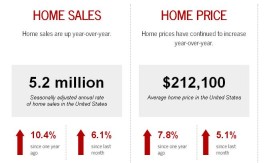14 Predictions We Like for 2014
Real Estate Prognosticators See CRE Recovery Continuing To Accelerate in 2014
Commercial real estate firms are moving into the New Year with a renewed sense of optimism – a positive outlook not seen for the past seven or eight years.
While many in the industry predicted a recovery in 2013, they did so with a sense of nagging worry over slower than expected job growth and concerns that the political brinkmanship in Washington could threaten the nation’s credit rating and pitch the economy into stagnation or, even worse, recession.
Much of those concerns have ebbed as the two parties came to terms in December over next year’s budget. In addition, the Federal Reserve has established a clear path for rolling back the so-called quantitative easing steps taken in years past to bolster the economy. By spelling out its path for reducing debt purchases, the Fed has taken out much of the guesswork for when those financial supports will end.
Given the overhanging sense of dread seems to have disappeared from most forecasts, experts are predicting a better year in 2014.
CoStar News has encapsulated Following 14 outlooks for 2014 from forecasts offered by respected industry participants and observers. We’ve sorted them alphabetically by the firm making the forecast.
Cassidy Turley: Impact from Rising Rates
If the big economic story of 2013 was policy vs. housing, this year doesn’t promise much in the way of variety. Policy vs. Housing, Part II will see the same threats to economic growth as we continue to struggle with dysfunction in Washington and, most likely, more political brinksmanship that may undermine confidence in the economy. But, while the challenges will be the same, the underlying fundamentals will be slightly stronger. Perhaps the biggest difference is that by the middle of 2014, economic growth should be strong enough for inflation to start to be a possibility once again. This is actually a good thing. The timetable could vary, but we anticipate the Fed raising interest rates by the end of the second quarter-likely in May or June. So long as interest rates don’t move too far too fast, the impact on the overall economy will be minimal. But there will be one. This could slow the housing recovery and it will certainly have an impact on commercial real estate pricing as the price of borrowing becomes more expensive. But that is assuming the underlying economic fundamentals have heated up to the point of warranting such a move-which is ultimately a good thing. A stronger economy may bring higher interest rates, but it will also bring higher earnings, lower unemployment, greater consumer spending and-for landlords-better rental rate growth and NOI. In the meantime, look for the first big political squabble (over the debt ceiling once again) to start up again in late January.
CBRE: Office Market Recovery Poised To Accelerate
The office market recovery is poised to accelerate in 2014, as an improving economy should result in increased office-using employment according to CBRE, the world’s largest commercial real estate services and investment firm. The growth in office-using occupations, particularly in high-tech industries, is expected to increase demand foroffice space. The U.S. office market vacancy rate will continue to decline next year, falling by 80 basis points (bps) to 14.3% by the end of 2014, Steady improvement in the office market is expected to continue in 2015, with the vacancy rate forecasted to dip another 80 bps to 13.5%. CBRE forecasts that office rents will increase by 3%, on average, in 2014, and rise another 4.4% in 2015, as vacancy levels fall steadily toward the “equilibrium” level over the next two years.
Cornell Univ. and Hodes Weill: Big Money Will Continue To Rule
Institutions are significantly under-invested in real estate and are poised to allocate significant capital to new real estate investments. The weight of this capital can be expected to have broad implications for the industry, including transaction volumes, fund raising, lending activity and property valuations. The supply of capital may sustain current valuation and financing metrics (including capitalization rates and the cost of debt capital), according to Cornell University’s Baker Program in Real Estate and Hodes Weill & Associates, which co-sponsor the Institutional Real Estate Capital Allocations Monitor.
Deloitte: Steady Growth but Not Enough To Spur Much New Development
CRE fundamentals continue to improve across all property types, including vacancy, rent, and absorption levels, according to Deloitte’s real estate forecast. However, demand is yet to increase enough to drive development activity, except for multifamily and hotel construction, which continues to be robust. These same sectors, which were the first to grow and recover after the recession, may see some tapering off in fundamentals as new supply comes to the market. Overall, it appears that fundamentals will continue to improve at a moderate pace, in line with the macroeconomic situation.
DTZ: Business Tenants Keep Bargaining Clout
The U.S. economy will continue to expand at a moderate rate, which will lead to more job growth and a related increase in demand for occupational space, reports global property services firm DTZ. However, with the expected moderate job growth, vacancy will only trend down slowly. Occupiers will remain in good bargaining positions over the next two years and occupancy costs will increase in line with inflation. They will continue to receive concessions as landlords compete to increase their properties’ net operating income. Occupiers will gravitate to the most affordable markets and continue to reduce their costs through more efficient internal space build-outs.
EY: Private Equity Funds Getting Hands Dirty
Having emerged from the global recession and its aftermath, the real estate private equity sector is finally positioned for growth in 2014, according to a global market trends outlook in real estate private equity published by EY (Ernst & Young). Strategies being deployed by different PE firms and even funds to take advantage of this growth opportunity differ, as fund managers seek to differentiate themselves in a hotly competitive fundraising environment. But EY sees fewer opportunities in the future for fund managers to capitalize purely from the financial structuring side of their investments. The funds that come out ahead of the competition in this next phase of growth will have one thing in common: an ‘old school’ asset management approach that realizes maximum investment value by working closely with service providers to fill buildings and manage real estate.
Freddie Mac: The Emerging Purchase Market
Led by a resurgent housing sector, 2014 should shape up to be better than 2013 with a quickening recovery pace leading to more job creation. Freddie Mac expects single-family home sales and housing starts to be at their highest levels since 2007, and expect multifamily transactions and construction to post gains as well. The big shift ahead will occur as the single-family mortgage market begins transitioning from a rate-and-term refinance-dominated market, to a first purchase-dominated market. The emerging home-buyer purchase market should gather momentum in the coming year.
Grant Thornton: Huge Boost Ahead for Industrial Markets
U.S. companies will bring production, customer service and IT infrastructure back home, reports tax-advisory firm Grant Thornton. The reshoring trend is real and about to dramatically reshape the U.S. economy. More than one-third of U.S. businesses will move goods and services work back to the U.S in the next 12 months, which means that as much as 5% overall U.S. procurement may return home. The Grant Thornton LLP “Realities of Reshoring” survey found that even IT services, one of the first business functions to move offshore, are likely to return within a year. The trend could provide an enormous boost to domestic manufacturers, retailers, wholesalers/distributors and service providers.
Jones Lang LaSalle: Pent Up Retail Demand Will Drive Investment
Total retail investment is expected to increase upwards of 20% in 2014, according to Jones Lang LaSalle, as pent up demand that was not satisfied in 2013 fuels investments and investors look to balance their portfolios. The retail market will continue to turn around despite store closings and consolidation. Vacancy rates are projected to inch downward driven by power center popularity, while rents are expected to increase albeit slightly for the fourth consecutive quarter. JLL also expects the number of retail property portfolios coming to market, which combine a broad spectrum of B and C retail assets, will increase as REITs look to sell assets and recycle capital in the year ahead.
Kroll Bond Ratings: Multifamily Resurgence in Conduit CMBS
The Federal Housing Finance Agency (FHFA) has begun to implement strategies to reduce the multifamily footprints of the two GSEs it oversees. As a result, Kroll Bond Rating Agency expects we will see a gradual decline in Fannie and Freddie’s securitized market share, which could revert to levels not seen since before the run-up to the CMBS market peak. At the peak of market in 2007, the conduit market’s share of the $36 billion securitized multifamily loan market was just over 78%. As the financial markets spiraled, that trend reversed and the GSEs became the primary source of loan production, dominating securitized new issues with more than a 95% market share.
Nomura: Muted CMBS Loan Maturity Risk
Based on the performance of loans maturing in 2012 and 2013, the investment bank Nomura estimates that 84% of loans maturing in 2014 will pay in full, a decline of just 3% from 2013 levels. Similar to 2013, Nomura expects the balance of loans rolling to delinquency to decline over the coming year, influenced by muted maturity risk and fewer term defaults resulting from improving CRE fundamentals. Most of the loans maturing in 2014 have 10-year terms and were underwritten prior to the sharp rise in property values that began in 2005. However, 15% of maturing loans have 7-year terms and were underwritten at the market peak. This set of loans has an increased risk of default at maturity.
PKF: U.S. Hotel Investors Poised To Do Well in 2014/2015
After a slight deceleration in growth during the last half of 2013, PKF Hospitality Research, LLC (PKF-HR) is forecasting very strong gains in revenues and profits for the U.S. lodging industry in 2014 and 2015. PKF projects national revenue per available room (RevPAR) to increase 6.6% in 2014, followed by another 7.5% boost in 2015. Concurrently, hotel profits should enjoy growth of 12.8% and 14.5% respectively over the next two years.
PwC US and ULI: Investor Activity Continues To Expand Beyond Core Markets
The U.S. real estate recovery is set to continue into 2014, with investors increasingly looking beyond some of the traditionally popular markets to secondary markets in search of higher yields, according to the latest Emerging Trends in Real Estate 2014, co-published by PwC US and the Urban Land Institute (ULI). The predicted growth in secondary markets will be driven by investors searching for returns as opportunities in core markets become harder to find and the most sought-after properties become more expensive. The move into secondary markets is underpinned by the anticipated increase in both debt and equity capital during 2014.
Transwestern: More Opportunities in Sale-Leasebacks and Net Lease
The cost of capital for owner occupants is on the rise, thanks to increasing interest rates. To cope with higher costs, owner-occupants are increasingly looking at selling their owned real estate as one strategy to generate funds for operating expenses, company expansion or retiring debt. This scenario presents an excellent sale-leaseback opportunity for investors looking to acquire real estate that comes with a long-term tenant in place. The lending environment is expected to bring more net-lease properties to market, as well. As interest rates increase, a larger number of office, industrial and retail buildings are projected to be marketed for sale.
That’s 14 predictions for 2014. We look forward to covering these and many other major trends in commercial real estate in the year ahead. Here is a bonus prediction from CoStar’s Property and Portfolio Research group:
CoStar: 2014 Best Year of Office Occupancy Gains in Recovery Cycle
Heading into New Year, office employment has been growing at the fastest rate since the start of the recovery, with the sole exception of early 2012. But there are two key differences between today’s market and that of the past few years. First, the office market now has far less under-utilized “shadow” supply space, which will drive a higher level of net absorption as more office-using tenants expand. Second, with the demand outlook improving and new construction still at bay in most markets, the 2014 occupancy gains in US office markets should be the best of the entire recovery and should tip the scales toward greater rent growth during 2014 than in the past few years. However, developers have already shown their willingness to break ground at the first sign of improvement. This has already happened in Boston, Houston, Silicon Valley and most recently, San Francisco. As developers ramp up new supply, the office occupancy gains are likely to slow in 2015 and certainly by 2016. Investors should enjoy the benefits of occupancy gains in 2014, which are expected to be the best in the current recovery cycle.







